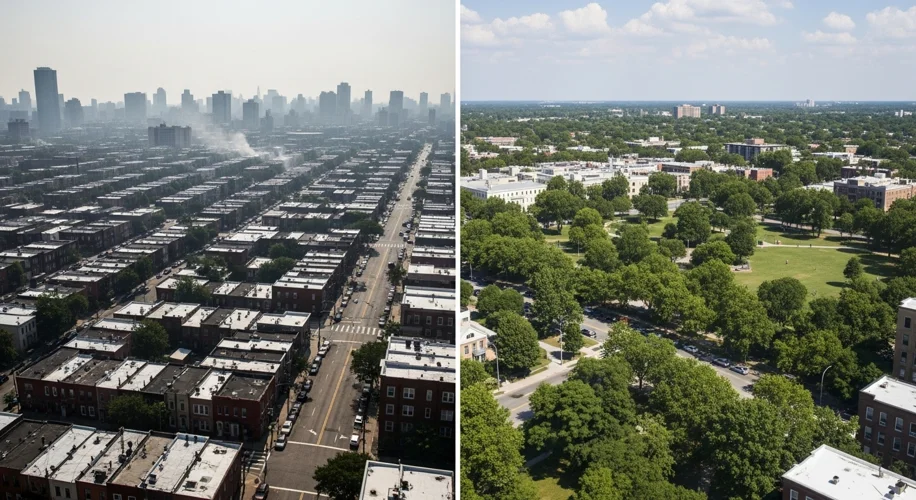Did you know that the concrete and asphalt that make up our cities can actually make them much hotter than surrounding rural areas? This phenomenon is called the Urban Heat Island (UHI) effect, and it’s not just about feeling a bit warmer. The way our cities are built, and have been historically planned, has created deep-seated environmental injustices that disproportionately affect Black communities.
As a scientist who has spent years studying climate modeling and the UHI effect, I’ve seen firsthand how these patterns emerge. It’s often rooted in historical decisions about where certain communities could live and where industrial or less desirable infrastructure was placed. Think about it: areas with less green space, more dark surfaces like asphalt parking lots and rooftops, and less tree canopy tend to absorb and retain more heat. These are often the very neighborhoods that were systematically disinvested in or zoned for polluting industries – neighborhoods predominantly populated by Black residents.
The impact of this isn’t just discomfort. Higher temperatures in these communities can lead to increased rates of heat-related illnesses, like heatstroke and exhaustion. Children and the elderly are particularly vulnerable, and when coupled with pre-existing health disparities, the effects can be severe. This is a direct link to climate change impacts – as global temperatures rise, the UHI effect exacerbates these challenges at the local level.
But here’s what gives me hope: we can change this. My experience working with environmental policy organizations has shown me that thoughtful urban planning and community-led initiatives can make a real difference. We’re talking about strategies like:
- Increasing Green Spaces: Planting trees, creating parks, and implementing green roofs can significantly cool urban areas. Trees, in particular, provide shade and release water vapor, which cools the air.
- Cool Pavements and Rooftops: Using lighter-colored, reflective materials for roads, sidewalks, and building roofs can bounce sunlight back into the atmosphere instead of absorbing it.
- Community Engagement: Empowering residents to have a voice in local planning and development ensures that solutions are equitable and meet the needs of the communities most affected.
These aren’t just abstract scientific concepts; they are actionable steps we can take to build more resilient and equitable cities. It’s about recognizing that the environment we live in is directly tied to the quality of our lives and health. By understanding the science behind the Urban Heat Island effect and its connection to environmental racism, we can work together towards creating urban environments that are cooler, healthier, and fairer for everyone. This is why I’m so passionate about this work – because sustainable development must also be equitable development.
It’s a complex issue, but one that we, as informed citizens and professionals, can help address by supporting policies and initiatives that prioritize green infrastructure and environmental justice.

